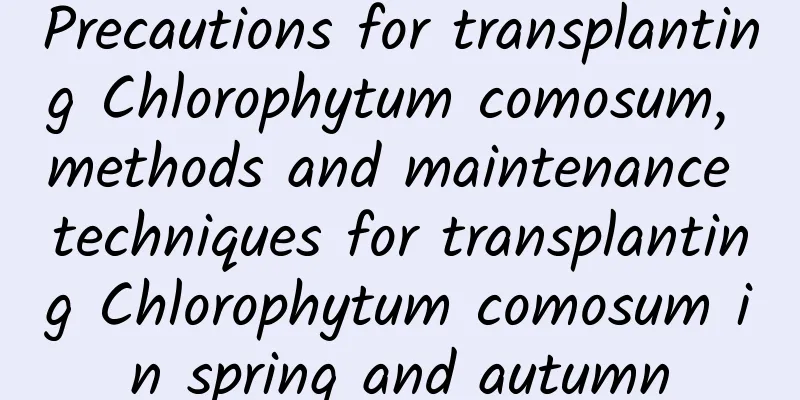Add a little of this when watering the flowers, all the bugs will die and the flowers will grow rapidly!

Garlic waterThe most common garlic contains allicin, which has strong bactericidal properties. It is definitely an expert in killing insects and bacteria! Flower lovers can add some garlic water when watering the flowers, which can kill scale insects, aphids, nematodes, etc. in minutes and allow the flowers to grow healthily! 1. Mash the garlic cloves into garlic pasteFirst peel the garlic, then mash it into garlic paste. The finer the mash, the better, so that the allicin can better exert its insecticidal and sterilizing effects. 2. Add clean water and let stand for 24 hoursPut the mashed garlic into a plastic bottle, then pour clean water into the mashed garlic. The ratio of mashed garlic to clean water should be 1:20. Screw on the bottle cap and place it in a cool place for 24 hours. 3. Spray the leaves with garlic water and all the insects will die.After soaking the garlic in water for 24 hours, pour the upper liquid in the bottle into a spray bottle, first spray it on the location where the insects are, and then spray both sides of the leaves. Spray once a day, spray 3-5 times continuously, and all the insects will be killed. It is both environmentally friendly and trouble-free! Ailanthus altissima leavesThe special smell of the ailanthus tree can effectively kill insects and bacteria, and its leaves also contain flavonoids and other effective insecticidal ingredients. Ailanthus trees are common in green belts. Flower lovers can pick some leaves and make a purely natural pesticide that can kill aphids and cabbage worms immediately! 1. Crush the fresh Ailanthus leavesFlower lovers can go to the green belt to pick some stinking sumac leaves. Pick fresh ones and pick as many as possible. Take them home, mash them, add 3 times the amount of clean water, and soak them for 1-2 days. 2. Filter out the leaf residue and spray the leavesAfter soaking the crushed stinking sumac leaves in clean water, find a piece of clean gauze to filter out the leaf residue, then put the stinking sumac leaf water into a spray bottle, and spray it towards the locations where aphids, cabbage worms, etc. are found. Spray 1-2 times a day for 3-5 consecutive days, and the insecticidal effect is great! Detergent waterWashing powder is really a must-have item for every household. Washing powder water can effectively kill red spider mites, scale insects, whiteflies, aphids, etc. This is because washing powder water can dissolve the wax on the surface of pests, and at the same time form a thin film on the surface of pests, isolating the air and suffocating the pests to death. 1. Dilute the washing powder 800-1000 timesChoose neutral laundry detergent to kill insects, and do not use detergent with too high alkalinity to avoid burning the tender leaves of the flowers. Take a spoonful of laundry detergent, pour in 800-1000 times of clean water, stir well to make it completely dissolved. 2. Spray the bugsPour completely melted laundry detergent water into a spray bottle, and spray it onto the leaves and branches where aphids and red spiders are found. Try not to spray it onto the soil in the pot. Use it once every three days, and after using it 3-4 times in a row, all the insects will die. 3. You can also use a brushYou can also find a soft-bristled brush, dip it in detergent water and gently brush the areas where the bugs are. This can better prevent the detergent water from flowing into the soil. 4. Spray branches and leaves with clean water in timeCheck the leaves carefully the next day after spraying. If the insects are gone, spray the branches and leaves with clean water to prevent the detergent from corroding the branches and leaves. Pepper waterMany flower lovers have said that after growing flowers, black flies kept appearing in their homes. So try chili water immediately. It contains the highly irritating capsaicin, which can kill any number of black flies. It is absolutely non-toxic and harmless, and will make the flowers grow quickly! 1. The hotter the pepper, the better the insecticidal effectFlower lovers should pay attention that when choosing peppers, the hotter the better. If you use peppers that are not spicy enough, the effect will be far from achieved. For example, very spicy chili peppers, dried peppers or fresh peppers will all be fine. 2. Chop the pepper and boil waterChop the pepper into pieces with a knife. If it is fresh pepper, be careful not to let the juice splash into your eyes. It is best to wear gloves to prevent the spiciness from getting on your hands. 3. Filter the pepper water and spray it on the pestsUse a filter to filter out the chili water to remove the chili residue, dilute the chili water 50 times, put it into a spray bottle, and spray it towards the location where there are small black flies. After spraying, all the small black flies will die and their bodies will fall to the ground. Neem LeavesThe chinaberry tree is also called the bitter chinaberry and the purple flower tree. It is usually planted on both sides of the road or in the green belts of parks. It grows tall and lush. The leaf juice of the neem tree contains neemin, which can kill cabbage worms, aphids, red spiders, etc. very quickly. Let’s see how to do it. 1. Pick fresh neem leaves and crush themGo to pick some fresh leaves from the neem tree. Choose fresh leaves as they have more juice. Pick more, preferably 1.5 kilograms. After mashing, add an equal amount of water. 2. Filter out the leaf residueUse a filter to filter out the leaf residue, then add 10 times the amount of clean water to dilute it, put it into a spray bottle, and spray it on the branches and leaves with diseases and insects. The insects will die soon. Neem leaves are very effective in killing pests, so flower lovers, hurry up and try it! Wood ash waterWood ash can not only provide potassium fertilizer for flowers, but also quickly eliminate pests such as red spider mites, aphids, whiteflies, etc., making the flowers grow more and more vigorously. 1. Pour clean water into the herb waterTake an appropriate amount of wood ash, put it into a plastic bottle, pour in 10 times the amount of clean water, shake it as evenly as possible, and let it sit for 8 hours. 2. Spray to kill pestsAfter the wood ash water has been left for 8 hours, stratification will occur. Pour out the clearer upper layer of wood ash water, put it into a spray bottle, and spray it on the branches and leaves infested with insects. Spray it 1-2 times a month. These insecticide methods How effective was your experience? Welcome to leave a message to Huahua! I think it is useful. Just share it with your friends to have a look! |
Recommend
What does the money tree mean?
Meaning It should be clear from the name that it ...
Can I repot the cyclamen I just bought?
Can I repot the cyclamen I just bought? Many peop...
Recommended Lunar New Year flowers with auspicious meanings
1. Phalaenopsis In many cases, orchid plants are ...
Can corn husks be used as fertilizer?
Corn husk fertilizer Corn husks can be used as fe...
How to Prune Grapevines
If you want to produce more grapes, you must do a...
How to maintain a gorgeous windmill
1. Breeding conditions 1. Soil: The gorgeous wind...
How to propagate lucky bamboo
Soil insertion method time The most suitable time...
What to do if the cat's eye arrowroot leaves are bent
One of the reasons why cat's eye arrowroot le...
Cultivation methods and precautions of Livistona
1. Maintenance methods 1. Temperature: It likes t...
How to Make Narcissus Bloom on New Year's Day
1. Water cultivation in advance If you want the d...
What colors does Phalaenopsis have and what are its characteristics
1. What colors are there? Phalaenopsis has a wide...
What to do if the leaves of green radish crack
1. Normal metabolism It is normal for its leaves ...
How to grow osmanthus to make it bloom
Osmanthus flowering time There are many varieties...
Does mint bloom?
Usually we think that mint is just a foliage plan...
The benefits of growing flowers
my country has a very long history of flower cult...









